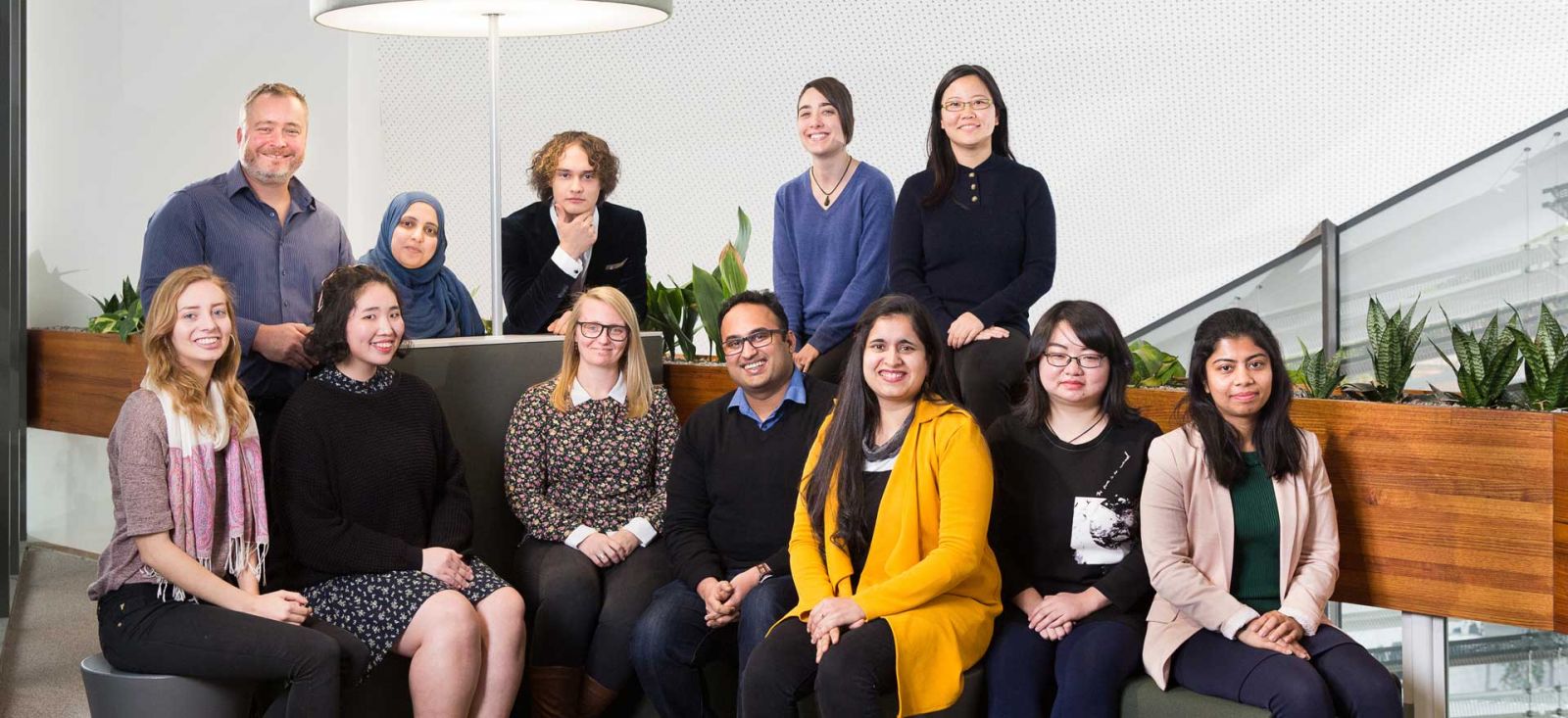Hatters Group

“We investigate novel methods and approaches to study the aggregation behaviour of proteins which are the hallmark of neurodegenerative diseases such as Huntington’s, Alzheimer’s and Motor Neuron Disease (MND). The hope is that we can identify some therapeutic targets” – Professor Danny Hatters
Research
Protein-protein interactions at the crux of neurodegeneration
Our lab is focused on deciphering the molecular mechanisms involved in neurodegeneration, and in particular Motor Neuron Disease and Huntington's Disease. A major area of research is in determining the role that abnormal protein-protein interactions play in the genesis of these diseases using biochemistry and cell biology-based approaches. One very prominent feature of neurodegeneration is the aberrant aggregation of proteins into microscopically visible deposits in neurons and other cell types. One arm of our research investigates how and why these deposits form and how they impact the cellular biochemistry. Another arm applies a more agnostic approach called Protein Painting to systematically examine the structural properties of proteins, and the networks they form, inside live cells. Protein painting allows deeper systems biology-style insight to how cellular functions operate than what is possible through traditional proteomics or transcriptomics approaches. Our vision is now to apply these approaches in a two-pronged effort to identify foundational molecular pathways responsible for causing neurodegeneration and build new capacity for biomarker identification, drug screen strategies, and to enable further discovery.
Specific research questions include
- Determining why misfolded proteins, including those associated with neurodegenerative disease, are toxic to cells
- How are misfolded proteins recognized and cleared by quality control machinery
- What are the mechanisms that give rise to inappropriate protein aggregation in cells
- What is the impact of inappropriate protein aggregation on cellular health and homeostasis
- How do the normal networks of protein interactions changes as the first steps of disease pathogenesis arise
Techniques
We are at heart a cell biology and protein biochemistry lab that strives to answer fundamental questions pertaining the interactions of proteins with the surrounding cellular environment in situ. In situ refers most commonly to cultured mammalian cell models, but we also occasionally investigate these features in organismal models of disease. Our research more generally is multidisciplinary involving national and international collaborators in fields of proteomics, chemistry, stem cells, mathematics, bioinformatics, next generation RNA sequencing and modeling.
We also build new methods in chemical biology, proteomics, biosensors and flow cytometry to address our questions.
Group Members
Research Assistant
Angelique Ormsby
Postdoctoral Scientist
Christian Makhoul
Honours Student
Anthony Basilone
Graduate Students
Hanieh Beyrampur
Kevin Castillo
Ruo Hua (Helen) Lyu
Biography
Professor Danny Hatters is an NHMRC Senior Research Fellow (2019-2023) and runs a research laboratory to study how proteins misfold and interfere with cellular functions, with a particular focus on mechanisms related to neurodegenerative disease. The research combines building new tools, biosensors and methods using various aspects of protein biochemistry and cell biology. He completed his PhD at the University of Melbourne in 2002 studying the biophysics of amyloid formation. He then completed his post doc at the Gladstone Institutes/University of California, San Francisco under the mentorship of Dr Karl Weisgraber from 2002-2007 studying the structure and function of apolipoprotein E4 protein, which is an important modifier of Alzheimer’s disease risk. In 2007, he returned to Melbourne to take up a CR Roper Fellowship position in the Department of Biochemistry and Molecular Biology to establish his own (current) research program. In 2012 he was awarded an ARC Future Fellowship and appointed faculty member of the Dept of Biochemistry and Molecular Biology. He was deputy head of department from 2017-2019.


